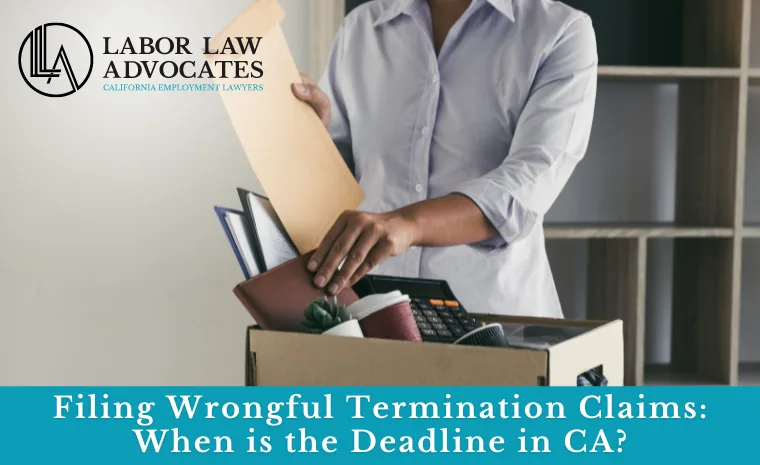Wrongful termination claims can be emotionally and financially draining experiences for employees. When facing such a situation, understanding the legal timeline for filing a valid claim becomes crucial.
In California, like in many other states, there exists a statute of limitations governing the time within which an employee must file a wrongful termination claim. Failure to adhere to these deadlines can result in the loss of the right to pursue legal action. Hence, it’s essential to grasp the nuances of these timelines to protect one’s rights effectively.
In this blog, we will discuss all about filing wrongful termination claims in California, focusing on the statute of limitations and why adhering to these deadlines matters.
Wrongful Termination In California
Wrongful termination refers to the wrongful dismissal of an employee from their job. California is an at-will employment state, meaning that employers generally have the right to terminate employees for any reason or no reason at all, as long as it is not illegal or discriminatory.
However, there are exceptions to this rule, and termination based on certain protected characteristics such as race, gender, age, national origin, disability, religion, or sexual orientation is prohibited under state and federal anti-discrimination laws.
The Statute of Limitations in California
In California, the statute of limitations for filing a wrongful termination lawsuit typically ranges from one to three years, depending on various factors. Claims based on state anti-discrimination laws, such as the Fair Employment and Housing Act (FEHA), generally have a one-year statute of limitations.
However, claims stemming from breach of contract or violation of public policy may afford employees a longer timeframe, often up to three years. It’s crucial to note that the clock typically starts ticking from the date of the alleged wrongful discharge or from the date the employee becomes aware of its discriminatory or unlawful nature.
Factors Affecting the Statute of Limitations
Several factors can influence the time limit for wrongful termination claims in California, including:
- Legal Basis of the Claim: The specific legal theory underlying the claim can impact the statute of limitations. Claims based on discriminatory reasons, retaliation, breach of contract, or violation of public policy may have different deadlines.
- Type of Employment Law Violation: The nature of the alleged violation also plays a role. Claims arising under state anti-discrimination laws, such as the Fair Employment and Housing Act (FEHA), often have shorter deadlines compared to claims based on breach of contract.
- Awareness of Wrongful Termination: The statute of limitations may begin from the date the employee becomes aware of the termination’s discriminatory or unlawful nature, rather than the termination itself.
- Applicable Legal Precedents: Court decisions and legal precedents may influence the interpretation and application of the statute of limitations in wrongful termination cases.
- Specific Circumstances of the Case: Factors such as the complexity of the case, availability of evidence, and involvement of multiple parties can affect the timeline for filing a claim.

Importance of Timely Legal Action
Seeking legal counsel promptly after experiencing wrongful termination is crucial for several reasons. Firstly, it allows the attorney to gather evidence and build a strong case within the statute of limitations. Delaying legal action may result in the loss of critical evidence or witnesses, weakening the employee’s position.
Secondly, consulting with an experienced California employment lawyer ensures that the employee is aware of their legal rights and options, empowering them to make informed decisions about their legal strategy.
The Role of a Wrongful Termination Attorney
The role of a skilled lawyer is pivotal in navigating the complexities of wrongful termination cases and protecting the rights of employees. These legal professionals specialize in California labor laws and are well-versed in the intricacies of statutes, regulations, and court decisions governing the workplace.
A California employment lawyer serves as an advocate for employees, providing guidance and representation throughout the legal process. They assess the merits of wrongful termination claims, gather evidence, and formulate effective legal strategies tailored to the unique circumstances of each case. Additionally, they negotiate with employers, participate in mediation or arbitration proceedings, and represent clients in court if necessary.
Conclusion
Understanding the time limit for filing illegal termination claims in California is essential for employees seeking to assert their rights. By seeking timely legal counsel and understanding the nuances of the law, individuals can maximize their chances of obtaining a favorable outcome.
If you suspect you have been wrongfully terminated from your job, don’t wait to seek legal guidance. Our team of experienced attorneys is here to help you navigate the complexities of wrongful termination claims and ensure that your voice is heard. Schedule a confidential consultation today to discuss the specifics of your case and learn about your legal options. Your future may depend on it.




